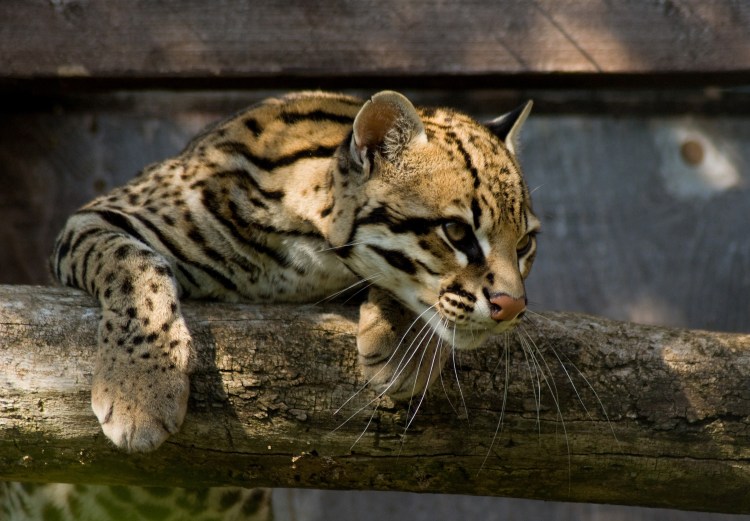
Conservation CATalyst, the group behind the viral El Jefe video from 2016, is in the news again. This time, they’re making headlines with a video of a rare ocelot (Leopardus pardalis) in southern Arizona.
While, on a global scale, ocelots are listed as Least Concern on the IUCN Red List, in Arizona they’re endangered. Ocelots used to be more common in this southwestern state, as implied by Dr. Aletris Neils’ comments on Facebook, but for many years they’ve been missing from Arizona.
I’m not terribly familiar with the history of ocelot conservation in the United States, but this article from the Smithsonian claims that habitat loss and overhunting for the cats’ fur decimated ocelot populations in Texas. It’s possible that similar factors contributed to their extirpation (local extinction) in Arizona. However, five ocelots have been confirmed in the state in the past 10 years.
Like jaguars (Panthera onca), most experts believe that the ocelots in Arizona are coming from the Mexican state of Sonora. This means that if the U.S.’ toddler-in-chief gets his way and is able to build a 30-ft high, solid concrete wall across the entire U.S.–Mexico border, then that will be the end of ocelot and jaguar recovery in the United States.
In light of this information, the Arizona Daily Star’s Tony Davis has just published a Q&A with Dr. Aletris Neils:1 Conservation CATalyst’s executive director. The interview deals with the recent ocelot video, as well as the environmental impacts of the proposed border wall.
Click here to read the informative Q&A with Dr. Aletris Neils on Tuscon.com. You can also find more information about ocelots in Arizona on Conservation CATalyst’s Facebook page.
Notes:
- I previously interviewed Dr. Aletris Neils about her research on caracals (Caracal caracal) in Namibia. Click here for the post.
I remember when these cats were privately owned and found in pet shops in this state (California). One of my flight attendant coworkers owned one and my husband then and I considered getting one ourselves. It was a fad in the late 60’s and early 70’s! Most of these cats though were smuggled in from Mexico, their natural environment.
Attitudes have changed since then, haven’t they? Still, I don’t like being hemmed in so why would they?
LikeLiked by 1 person
What a beauty.
LikeLiked by 1 person
I know, right? Ocelots are extremely beautiful.
LikeLiked by 1 person
Yes! It’s a shame that we’ve made so many of these great wild cats nearly extinct.
LikeLiked by 1 person
A shame indeed! There’s still time to set things right, if we all work together.
LikeLiked by 1 person
Thanks for sharing this sadly timely information about a wall’s effects on wildlife like this ocelot
LikeLiked by 1 person
No problem, I only wish that we didn’t have to talk about issues like this in the 21st Century.
LikeLiked by 1 person
Me too
LikeLiked by 1 person